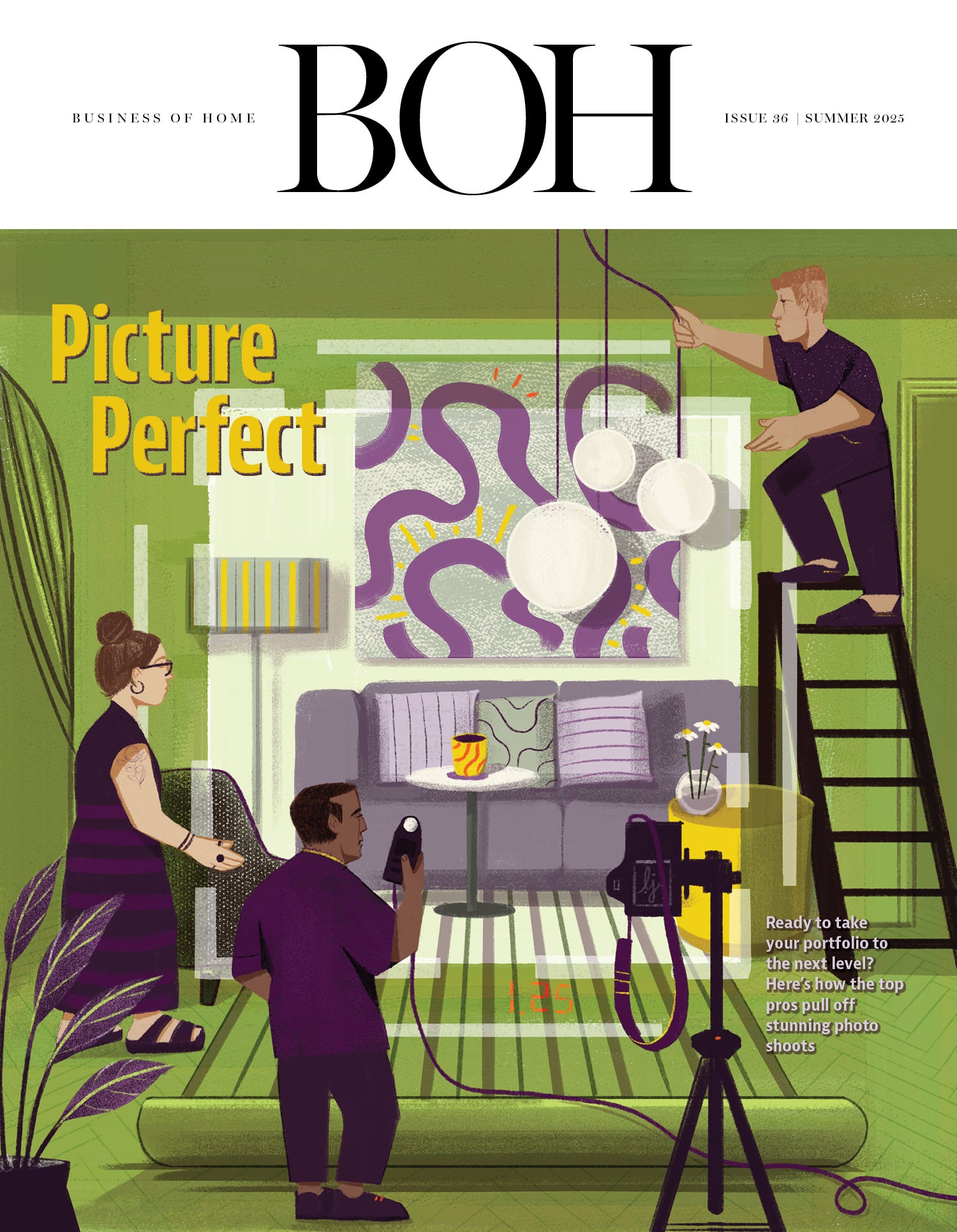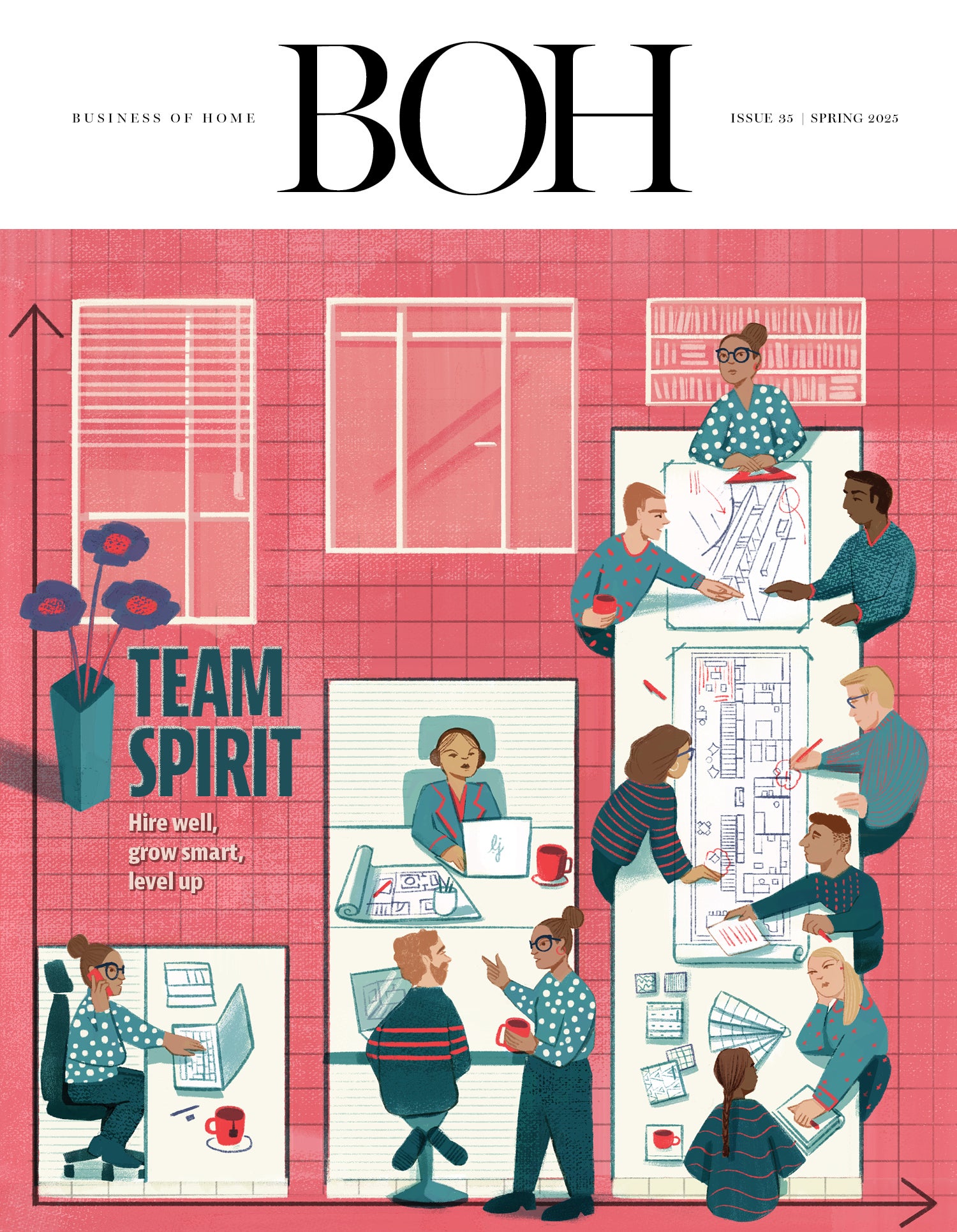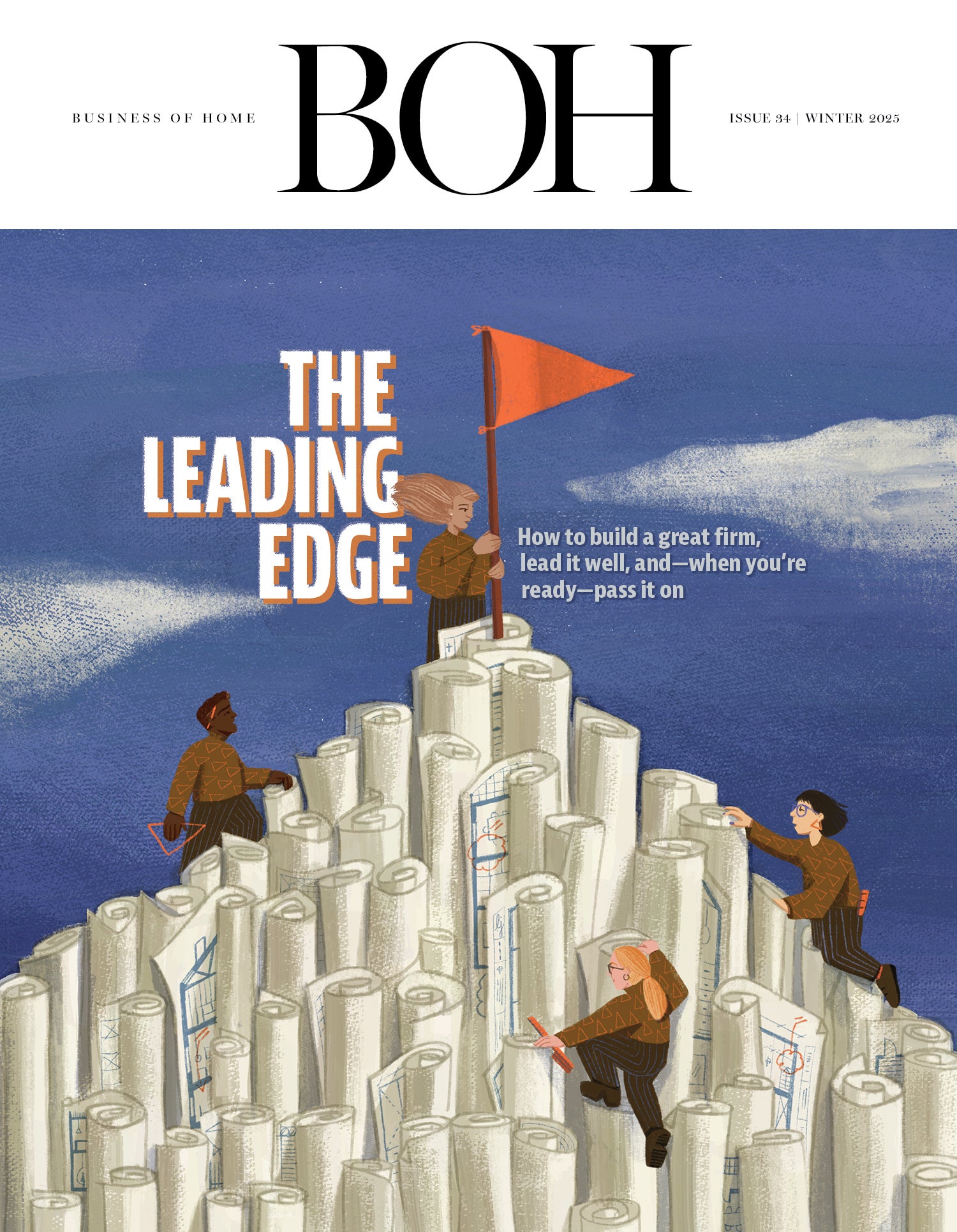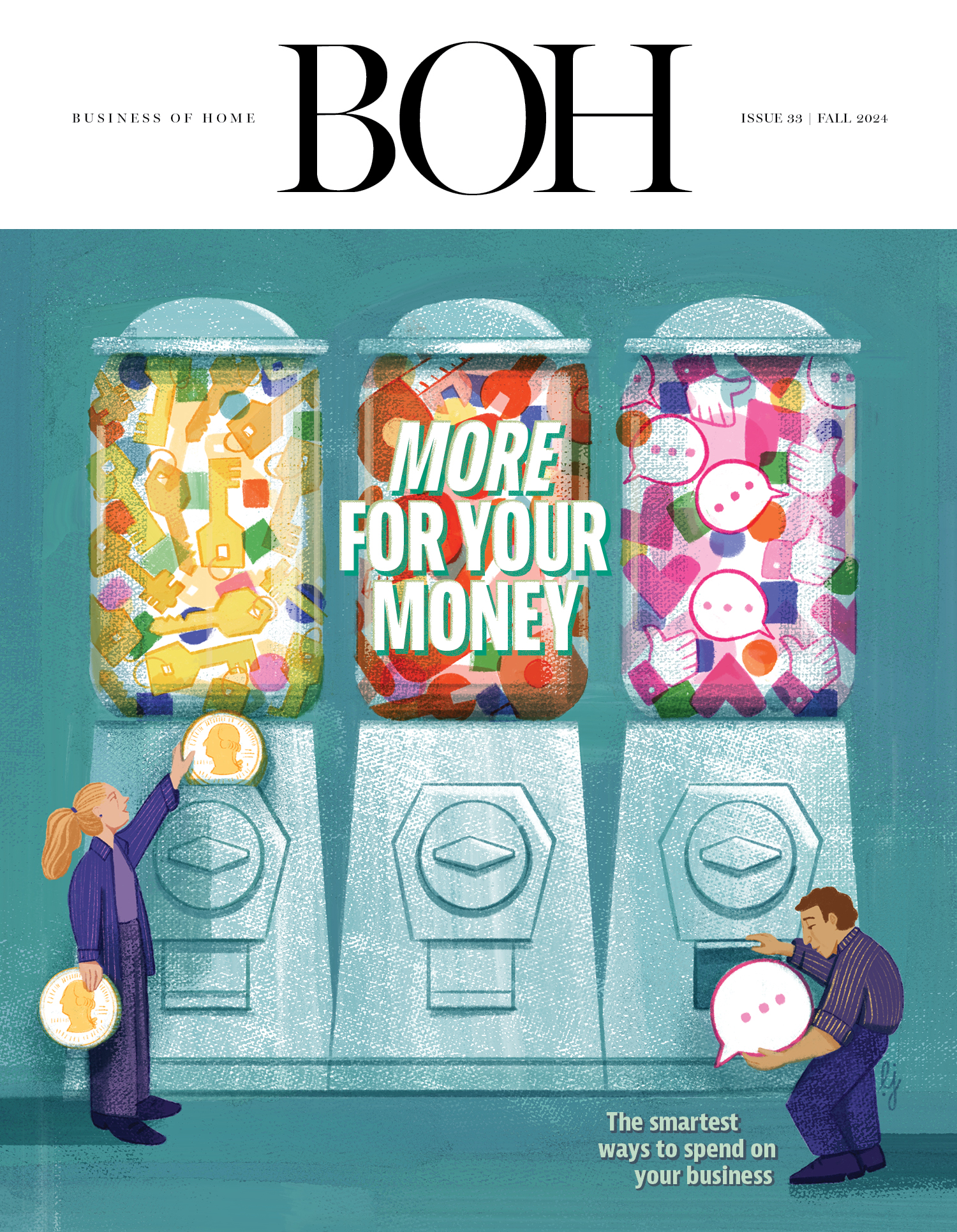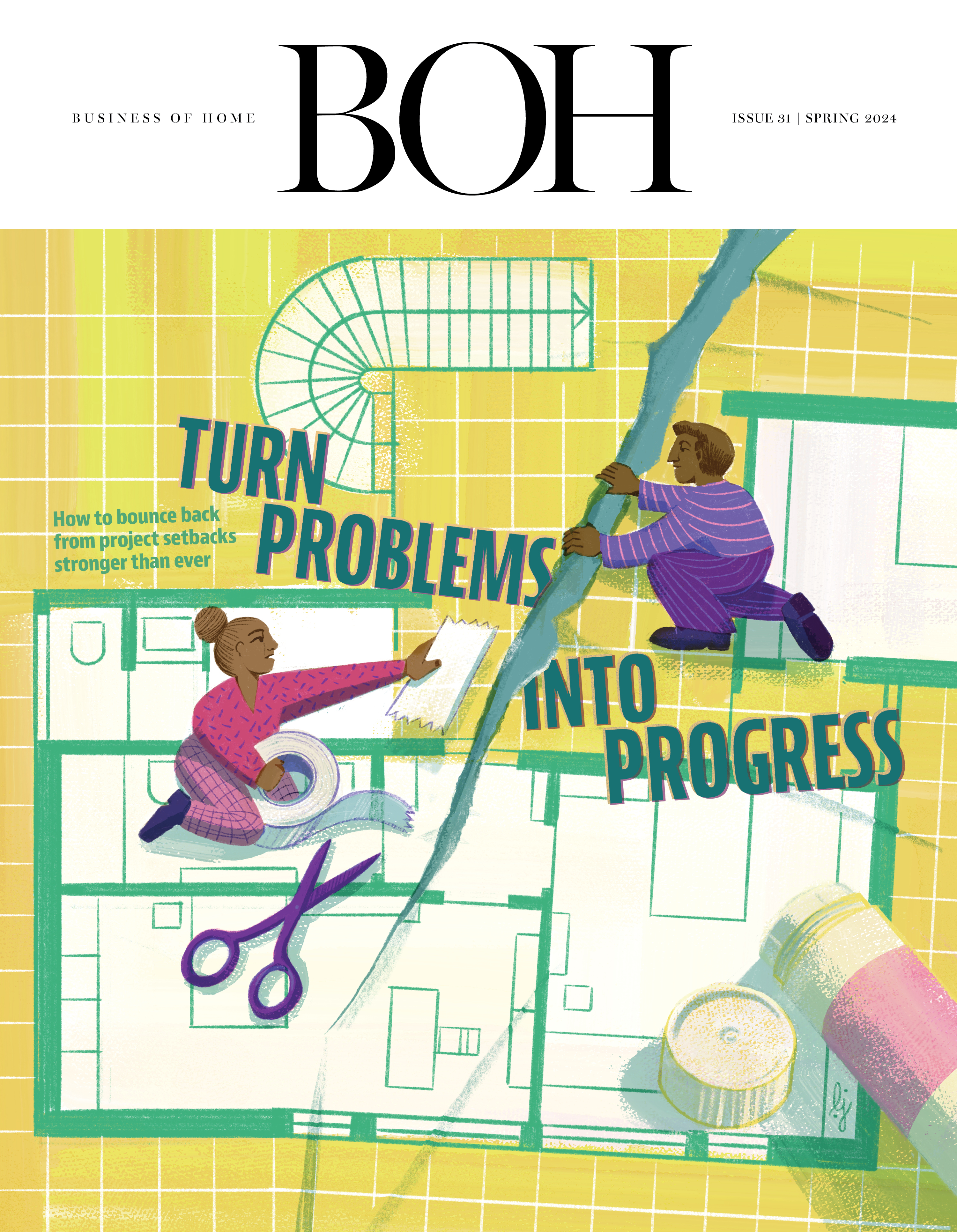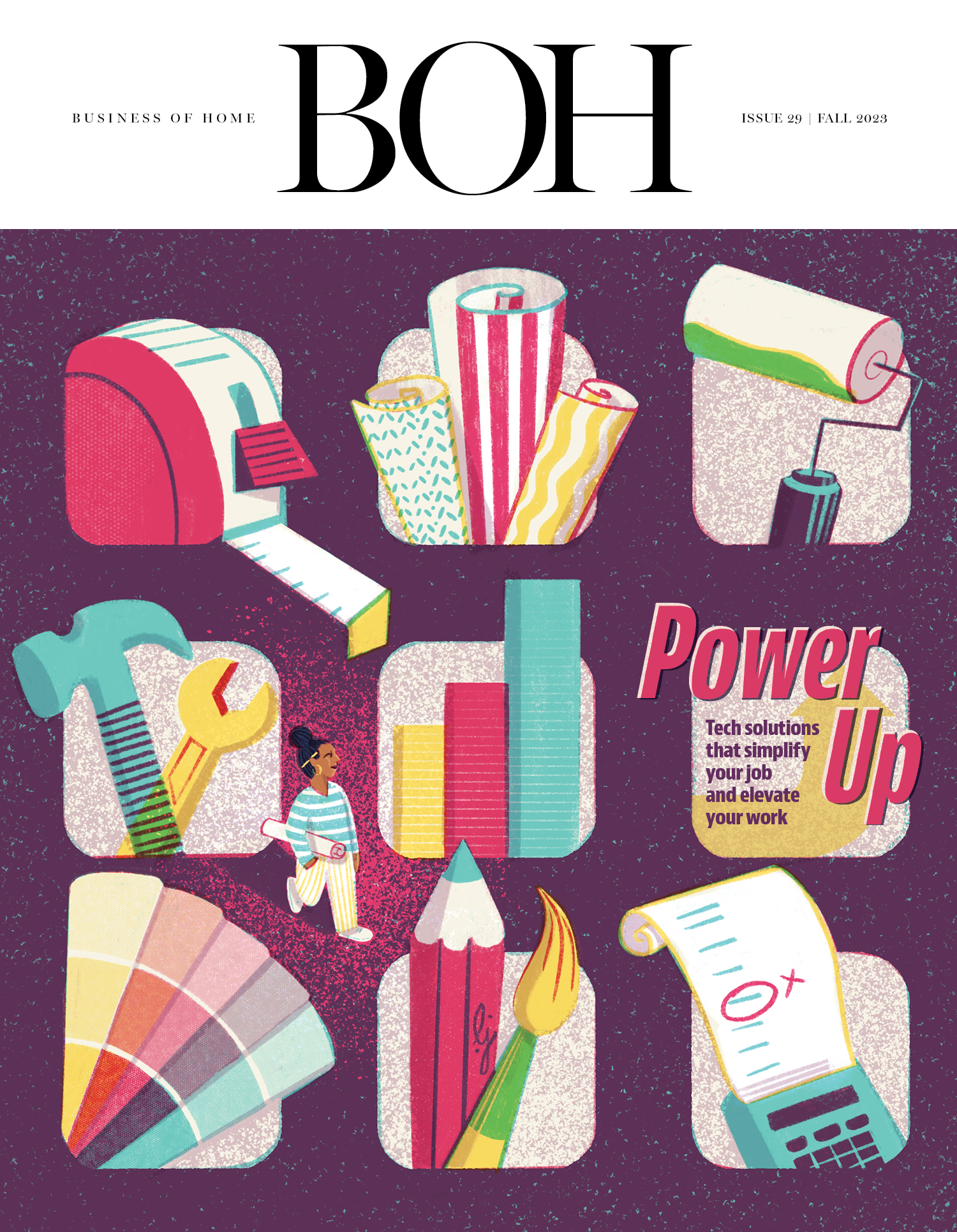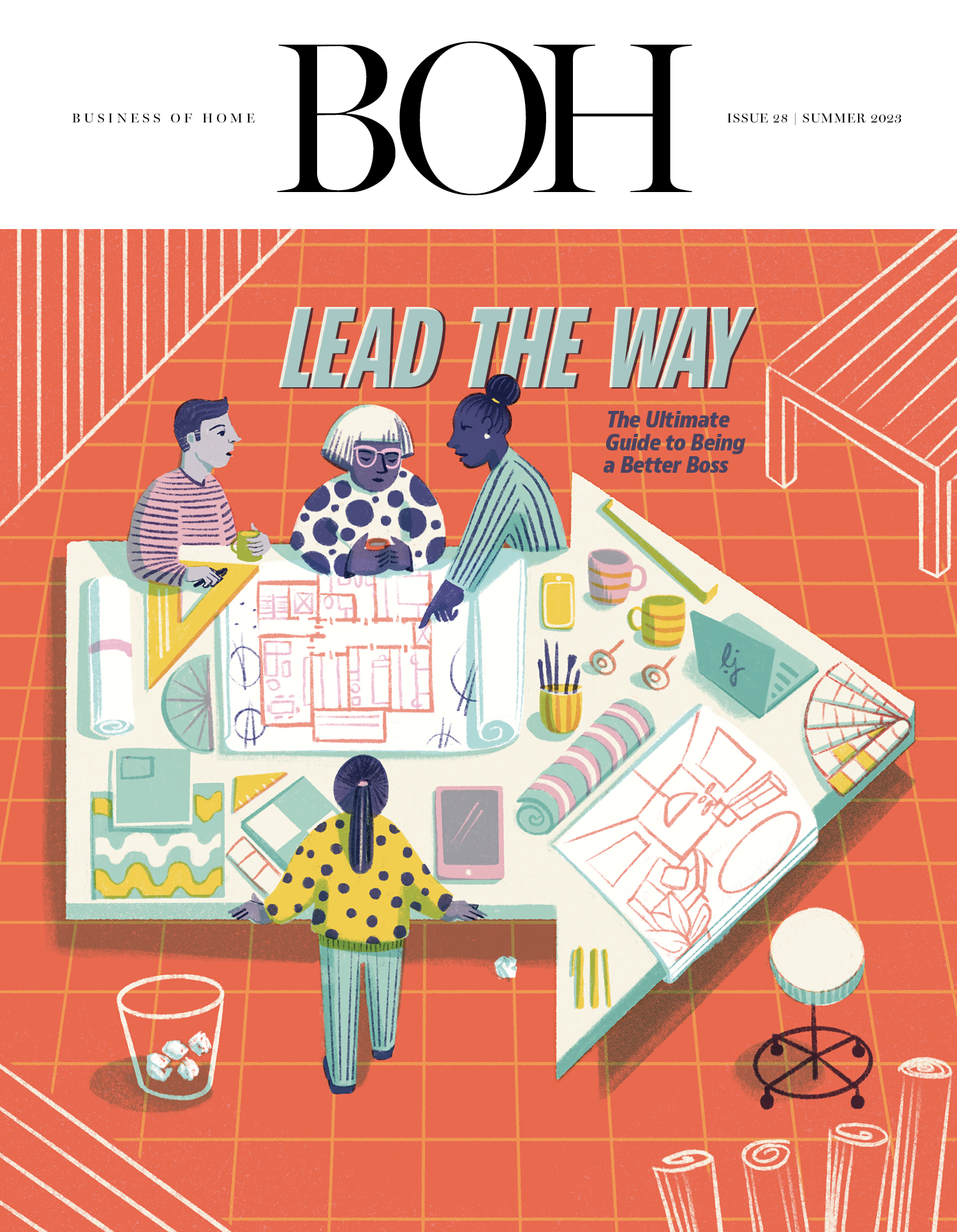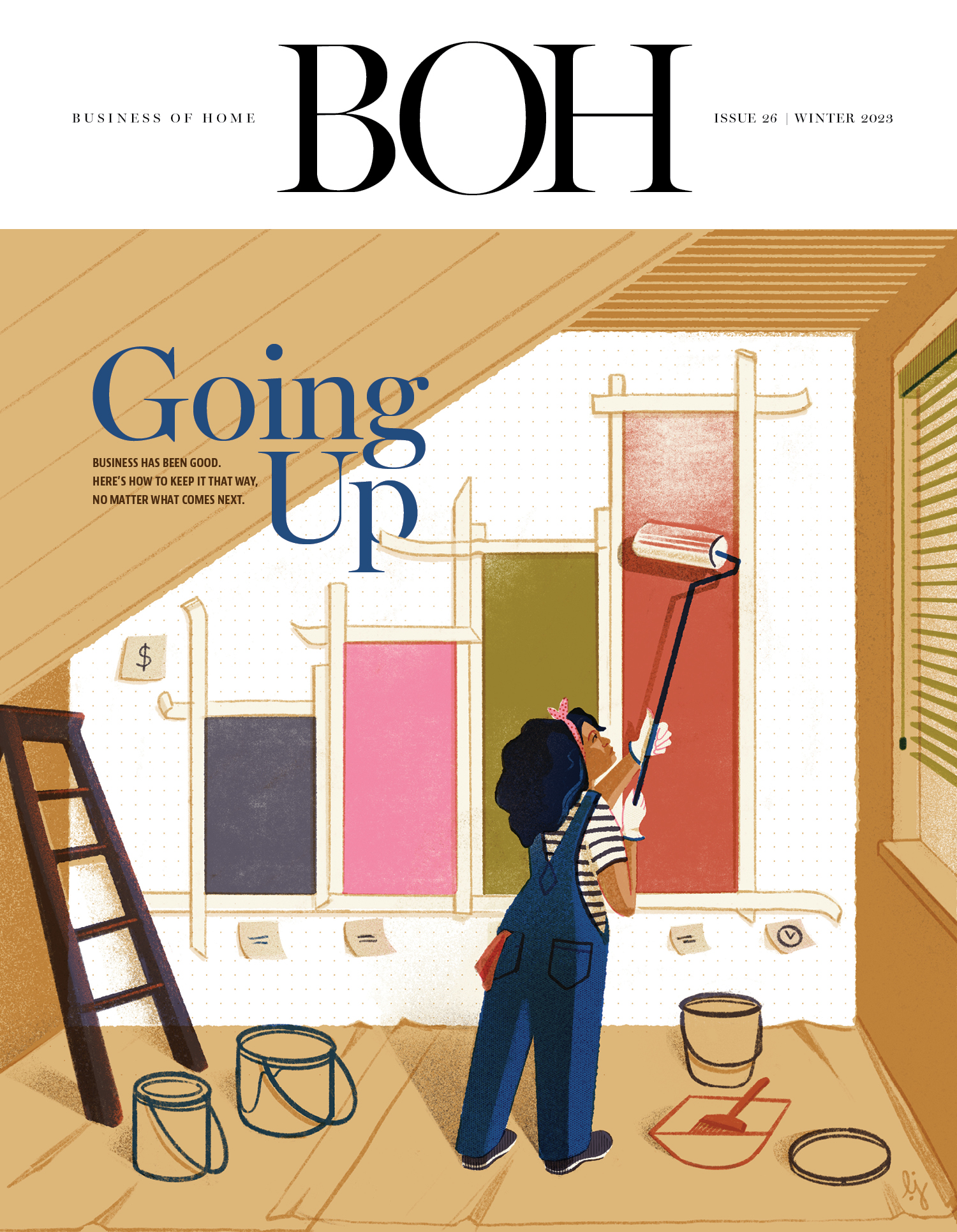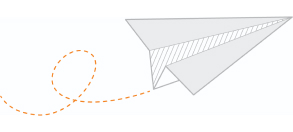Over the past week and a half, the design industry has been consumed by tariff whiplash. First, there was shock at the numbers unveiled in the Rose Garden. Then came the wild gyrations of the stock market and a flood of announcements on possible price hikes. Last week, a 90-day pause on most global tariffs brought some calm, though an escalating exchange with China is likely to lead to more agita in the days ahead.
Somewhat lost amid that chaos are the intended beneficiaries of the Trump administration’s trade policy: domestic manufacturers of home goods. In that sector, the tariffs have led to mixed reactions, with American producers cautiously balancing the pros and cons of the moment. On one side is the real possibility of booking new business. On the other, rising material costs and a potential economic slowdown threaten to cancel out any gains.
It’s worth noting that despite the flurry of activity around tariffs, it’s early. There is a general sense among manufacturers that the administration has not reached a resting trade policy—and, with that in mind, no one is making sudden moves. Just as the retailers and importers who spent the past five years painstakingly moving from China to Vietnam are not planning to move to the U.S. overnight, most American factories haven’t seen a flood of new orders in the past week. But the tariffs have gotten the phone ringing.
“The conversations have definitely increased,” says Lance Keziah, CEO of performance textile brand Crypton Fabric. Though the company produces its fabrics all over the world, Crypton has a textile weaving mill and a finishing facility in North Carolina. Keziah has seen interest in the U.S. operation spike over the past 10 days: “We’re talking to top customers daily in terms of what we can do domestically.”
It can be difficult to compare apples to apples when pricing with overseas manufacturers—especially now that Asian factories are grappling with the new and evolving tariffs and trying to make adjustments to keep customers. While Keziah says that continued high tariffs might make some U.S.-made fabrics competitive with Chinese-produced goods, the most compelling pitch is as much about stability as price. “The unknown is: What else is going to happen? Maybe they negotiate a great deal with Taiwan and Vietnam—and I hope they do—but for all we know, in 90 days that could change again,” he says. “What we’re doing in North Carolina is not going to change. … We want one to be the one piece of the puzzle where customers can say, ‘I don’t have to worry about this.’”

Anderson Gibbons, the chief marketing officer of family-owned North Carolina textile mill STI Fabrics, says that last week he and his father, Sean Gibbons (the company’s CEO), spent multiple days filled with “seven hours of back-to-back calls” with customers. STI specializes in upholstery fabric at an introductory price point, and for at least a decade, the company’s competition has largely been Chinese mills. A 145 percent tariff on China has transformed the math overnight. “I went from being $1.50 more per yard to 50 cents less,” he adds. “Honestly, we haven’t fully wrapped our heads around that. It’s a new chapter.”
Like Crypton, STI has seen some clients take a wait-and-see approach, especially larger retailers. But some of its smaller, more nimble customers have been quicker to replace overseas product. “Last week, I got [an order for] 61 SKUs because [a client] was replacing a Chinese competitor’s chenille with our chenille,” says Gibbons. “[They think tariffs] are going to stay, and they’re dramatically shifting supply chains within a week.”
Brands across all categories are making the same calculations. Upholstery, with its heavy labor cost, is hard to make cheaply in the U.S., and even with high tariffs on Asian countries, it’s difficult for domestic manufacturers to match or beat pricing. But a narrowing gap allows American factories to highlight the advantages of domestic production. “We’ve had three big customers visit us in the last few weeks because they’re thinking, ‘OK, we need to figure something out in the United States,’” says Veronica Schnitzius, the president of American Leather. The company is part of the Artisant Lane portfolio of brands, which produce upholstery under their own names as well as for private-label clients. In American Leather’s case, production takes place in a sprawling 600-person facility in Dallas. “People haven’t pulled the trigger big time yet because they don’t know where this is going to end up, but the interest is there,” adds Schnitzius.
Meganne Wecker, the CEO of Chicago-area upholstery manufacturer Skyline Furniture, says that sustained tariffs will make some of her product more competitively priced, especially in certain categories (beds, for example, are famously SKU-intensive, requiring retailers to hold a lot of inventory to account for multiple sizes, which drives up costs). The main selling point, however, is about convenience, speed and reliability.
“We ship it quick, and the freight is tiny compared to what it is to bring it in from overseas,” she says. “We’re offering no MOQs [minimum order quantities], there’s no upfront investment for retailers and from the trade—you can really place orders one at a time. … Chicago was already a viable option, even before these tariffs, and I think they make it even more interesting.”
Schnitzius sees a similar dynamic in her business. “When we get a lot closer on pricing, that’s when our business model becomes more powerful,” she says. “It’s speed to market; it’s not having to hold inventory as trends change—you don’t have to have a warehouse.” However, for American Leather, the greater opportunity may lie in competing not with Asian producers in the lower tiers of the market, but with European brands that occupy the highest.
“We compete with Italy at our price point. A 10 percent tariff [the current rate on European countries] is significant—on the higher end, we just became more competitive, so how can we capitalize on that?” she says. “What might happen out of all of this is that China and Europe get closer [in price]. And it may be a 10 percent tariff today, 20 percent tomorrow—people start to make decisions around the U.S. because of that possibility.”
Though U.S. producers are sincerely optimistic that heavy tariffs will create opportunity, most are not betting on it at this point. They’re messaging around their domestic bona fides (survey LinkedIn and you’ll see plenty of this) and touting their ability to scale up, if need be, to keep up with demand. But just as their customers are waiting to see how trade policy shakes out to place big orders, factory owners have not yet moved to double their footprints or hire hundreds of additional workers.
There is a general sense that tariffs may be an opportunity for domestic producers who had already invested in growth and less of one for entirely new entrants. “Opening a plant in the U.S. takes tens of millions of dollars, and you don’t do it overnight,” says Keziah. “There are a lot of companies that are not going to do it because they’re thinking: ‘In four years there’s a new administration, and who knows what their policies are going to be.’ For the folks who do have the footprint, it’s a lot easier for us to expand our capacity.”
Gibbons says that if High Point Market leads to a rush of new orders, STI is planning to reinstitute a third production shift it had phased out during the pandemic. The addition would create new jobs and allow the company to expand its production capacity from 350,000 to 500,000 yards a week—a substantial increase, but a tiny fraction of the overall demand for home textiles. Taking any more market share would require more costly investments in new space, new equipment, and a significant number of new hires—all daunting in an industry that has, for the past 40 years, mostly seen business migrate overseas.

“Our banks are talking to us, and we’re looking at our cash, our war chest, wondering: ‘Is this the future?’” he says. “We would like nothing more than to expand our domestic textile footprint. It’s just going to take a little bit of time. If these tariffs were to go off tomorrow, STI would still be successful. But if these tariffs don’t go off for a long, long time, we’re going to have to make some investments that right now seem scary.”
Though they may bring new opportunities, tariffs will also bring domestic producers new headaches. Many still rely on imports for components and raw materials, which are likely to go up in cost. Like the importers they compete with, many U.S. manufacturers have sought to move their supplier base out of China since the first round of Trump tariffs in 2018. Despite that effort, certain materials remain “stuck” in the country.
“We’ve been pushing really hard to move out of China, and we’ve been trying to do it with fabrics,” says Wecker. “We’ve spoken with [U.S. companies] and said, ‘What can you do outside of China—and even better, in the U.S.?’ … But it is difficult because the machinery and equipment [for some textiles] just doesn’t exist here, and it’s going to take a decent investment to either bring it back or reinvent it.”
Wecker says that Skyline’s investments in digital printing equipment will help it stay nimble amid rising material costs. In general, though, higher input costs will likely put additional pressure on most manufacturers’ expenses, either eating into their margins or causing them to raise prices and lose some of the ground they’ve gained on overseas competitors.
The bigger concern is simply that tariff-induced economic uncertainty will drag down business overall. Home furnishings are among the most discretionary of discretionary goods, and none of the economic indicators that tend to lead to good outcomes for the industry are looking particularly rosy at the moment: The housing market remains stagnant, the stock market is wobbly, and consumer confidence just hit its second-lowest measurement since 1952.
Take Remains Lighting, a brand that produces high-end fixtures out of a Brooklyn factory. In some ways, it seems ideally suited to capitalize on tariffs, with owner David Calligeros reporting that the company’s input costs will rise only slightly. Lighting production, unlike case goods and upholstery, remains heavily concentrated in China, meaning that importers will likely see their costs rise sharply—making Remains’ pricing more attractive by comparison. But when asked if tariffs would help his business, Calligeros offered a blunt assessment.
“What projects there are, we’ll see an advantage over those folks who principally manufacture overseas,” he says. “[But] I think overall it’s going to depress the market. I think people are getting very reticent about project creation, and people who have projects are nervous about continuing to spend money.”
The state of play gives U.S. manufacturers a lot to think about: New leads coming in the door, costs going up, and a murky economy in the background. For many, what happens in High Point at the end of the month is as much of a litmus test as what comes out of Washington. Meetings with buyers at Spring Market will be the first big moment to assess whether the conversations they’ve been having will actually turn into business.
“We have a lot of appointments on the books,” says Schnitzius. “We’re thinking of High Point very differently than we were three weeks ago.”




